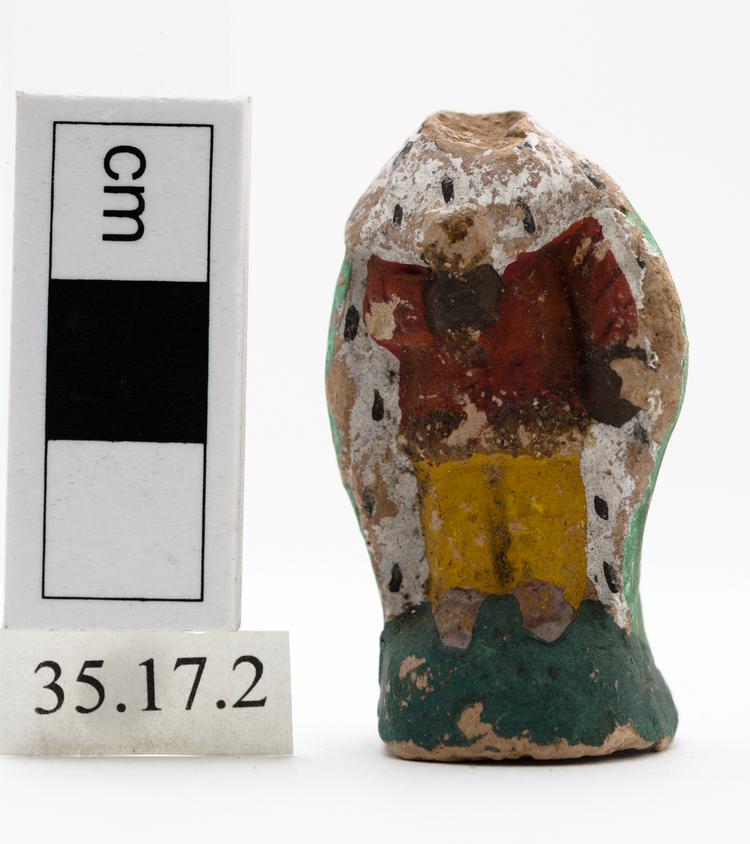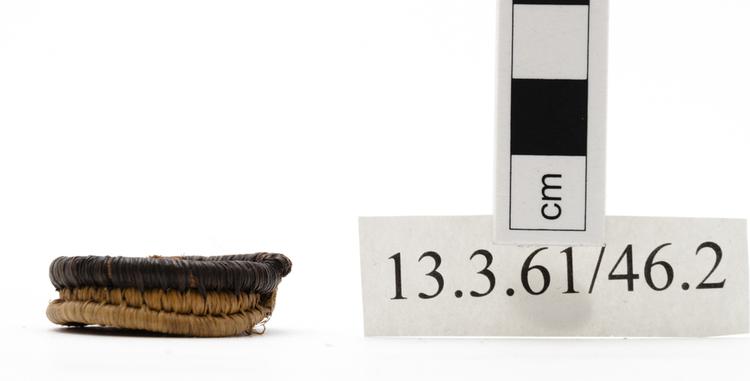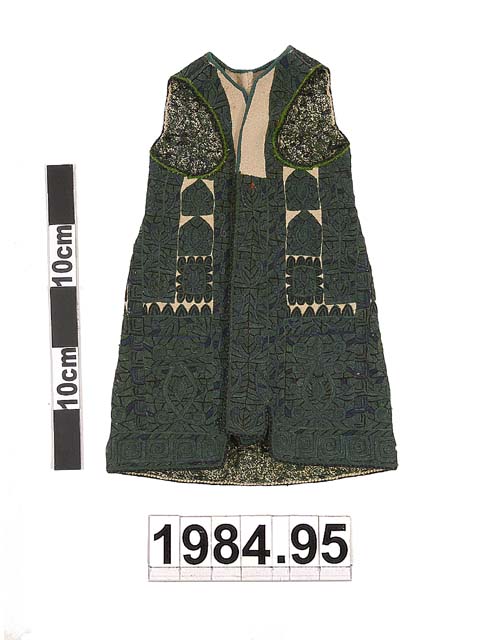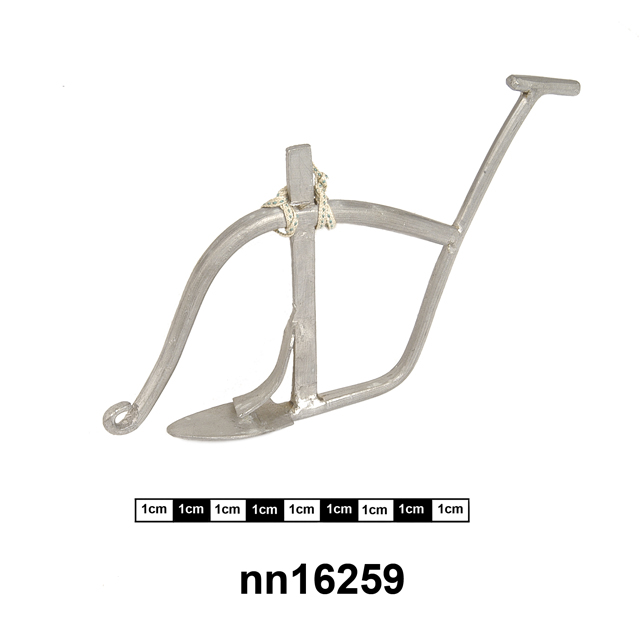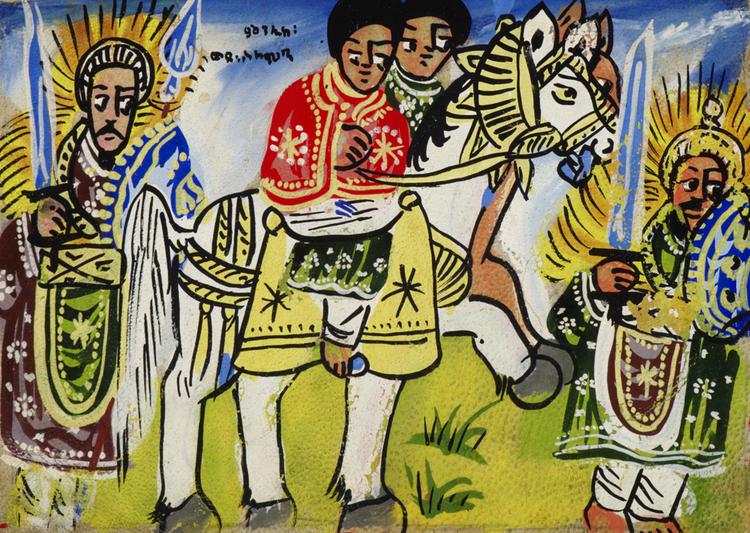
Painting on parchment depicting a single scene from the story of King Solomon and Queen Sheba. Menelik is shown travelling to see his father, King Solomon. Menelik is shown riding a white horse with a richly decorated saddlecloth, ornate bridle and crupper, and distinctive Ethiopian toe stirrup, through which only the big toe is placed. Menelik wears very richly embroidered clothes symbolising his status, while the red of his 'Kabba' is traditional signifier of royalty. To the front and back are two royal guards dressed in embroidered velvet tunics, 'lemd' and lion-mane headdresses. They both carry swords and velvet-covered shields.
The painting represents a single scene from the Ethiopian story of Solomon and Sheba. It shows Menelik, the son of Sheba (sometimes known as Makeda), travelling to Jerusalem to see his father, the biblical King Solomon. The story is central to the ancient Ethiopian book, the 'Kebra Negast' or 'Glory of the Kings'. The book has been described as a repository of Ethiopian national and religious understanding. It is an account written in Ge'ez (the ecclesiastic language of the Ethiopian Orthodox Church) of the origins of the Solomonic line of Ethiopian emperors and explains how the Ark of the Covenant came to Ethiopia. This is understood as historical fact by many Ethiopian Christians and Rastafarians.



